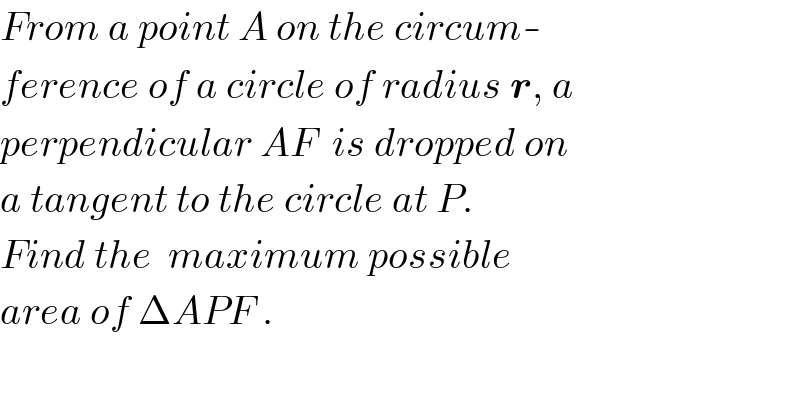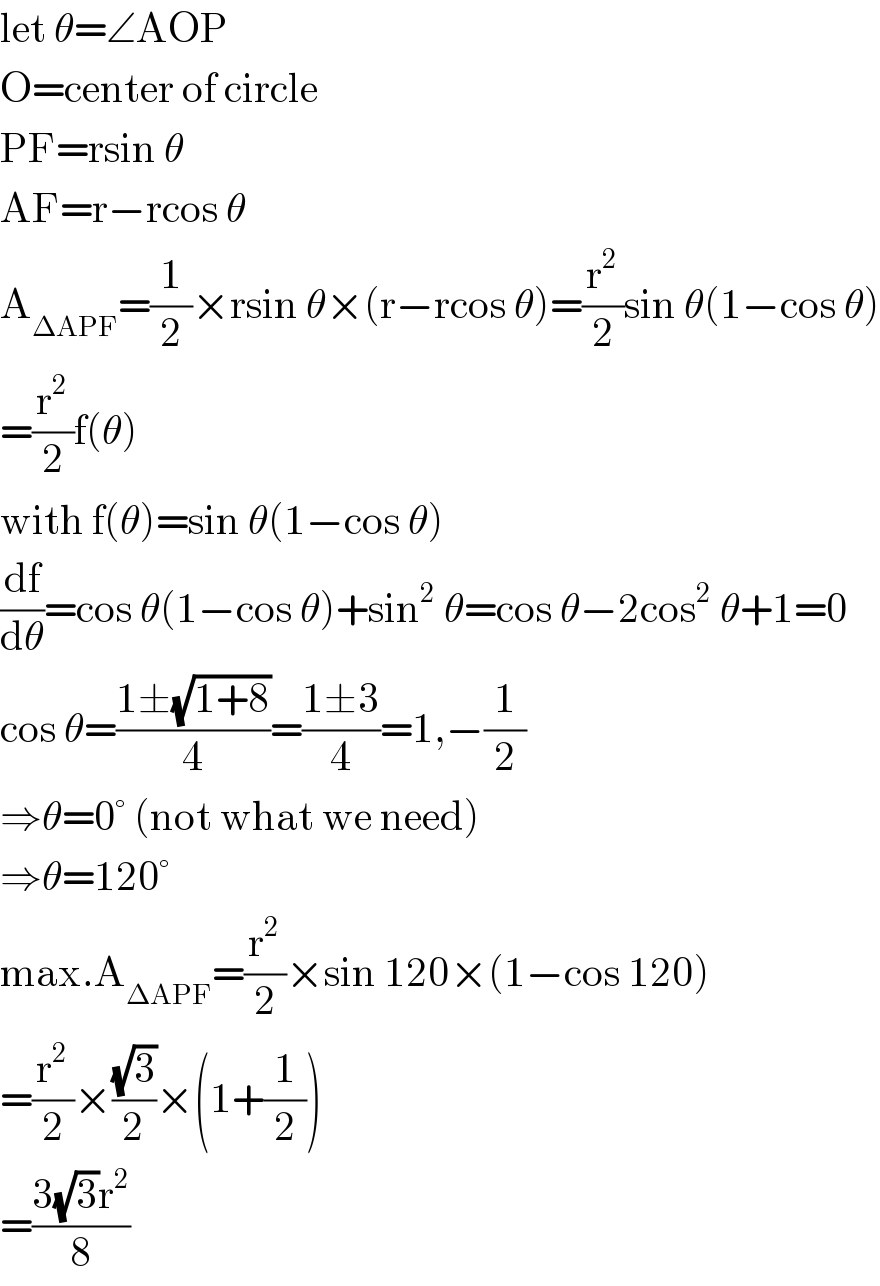
Question and Answers Forum
Question Number 15736 by ajfour last updated on 13/Jun/17

Answered by mrW1 last updated on 13/Jun/17

Commented by mrW1 last updated on 13/Jun/17

Commented by ajfour last updated on 13/Jun/17

| ||
Question and Answers Forum | ||
Question Number 15736 by ajfour last updated on 13/Jun/17 | ||
 | ||
Answered by mrW1 last updated on 13/Jun/17 | ||
 | ||
| ||
Commented by mrW1 last updated on 13/Jun/17 | ||
 | ||
Commented by ajfour last updated on 13/Jun/17 | ||
 | ||